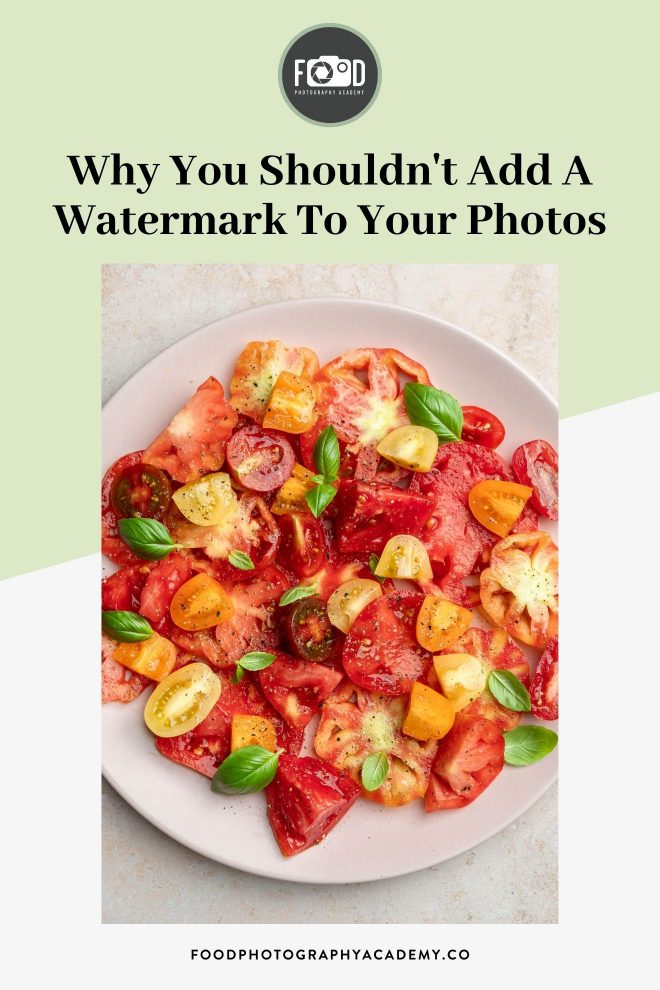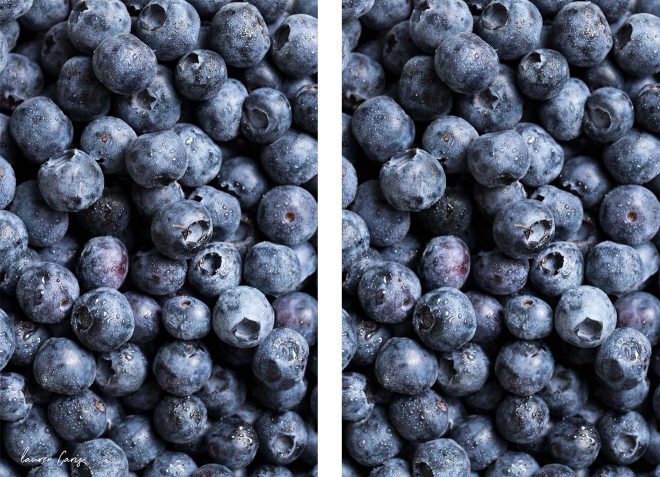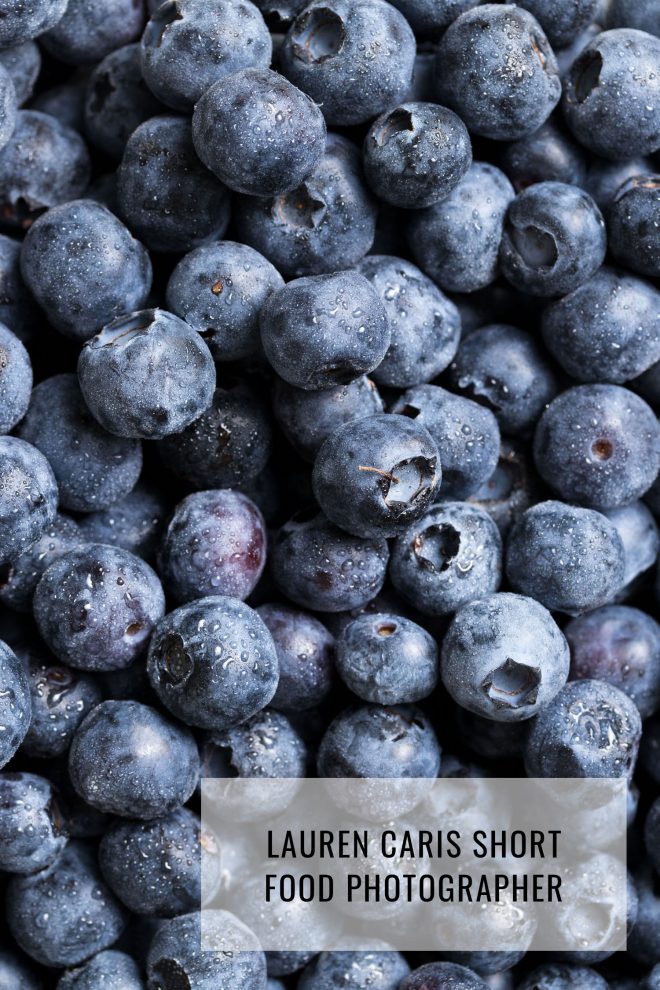Watermarks suck.
I know. I know, lots of photographers like to add watermarks to their photos. I even did it for a short time when I was just starting out. And there are in fact some quite persuasive arguments as to why you’d want to add them. But, in nine cases out of ten, I think that any validity these arguments might once have had has since been undermined by technological advances.

It’s a debate that’s been raging pretty much as long as there’s been photography on the internet, but I’m hoping that this article will put an end to the argument once and for all: for nearly every kind of photographer, adding a watermark to your photos is a waste of time.
In actual fact though, it’s much more serious than this; in my opinion adding a watermark is also something that can be harmful to your business as a photographer.
Why? We’ll get to that in a minute. But first let’s approach things the other way round: why exactly would you want to add a watermark to your photos?
Arguments in Favour of Adding a Watermark
There are quite a few arguments as to why you might want to add a watermark to photographs. Some of them pretty convincing too. Let’s take a look at the main ones.
Watermarking Stops Image Theft
Photographers often add a watermark to their photos in order to protect their work from being used without their permission. That’s certainly something I can sympathise with.

Take this photo for example. I shot it a few years ago for my food blog and had all but forgotten about it since.
Then one day I got a text from a friend saying “I’m sitting in a cafe in Spain and I think this is your photo – did you know about this?”

Umm, no, I didn’t know about it. And it’s actually quite an old picture too, so not necessarily one that I want to find being used anywhere today – either with permission or otherwise.
It’s not a nice feeling to have your work stolen. Even when it’s a small-scale example such as this one, it can still be pretty upsetting.
Thinking about it though, I probably wouldn’t be too happy if I was a customer at that cafe either; given that they didn’t make the smoothies in my photo, you have to wonder if they actually know how to make any of the dishes they offer on their menu.
I’ve even heard about one photographer’s work being used on billboards to promote a fashion brand without them knowing. Can you imagine that? Never mind the money; what if it was for a brand that you actively dislike, or that you disagree with on ethical grounds?
Obviously here the argument is that adding a watermark to your photos will stop others from using them.
But is that really the case?
We’ll come back to this in a minute.
Watermarking Ensures Credit Is Given Where Credit is Due
First though, there’s another important argument that photographers who add a watermark to their photos invariably bring up. Namely that in an age when digital images are frequently posted, pinned, and redistributed multiple times – often with no mention of who the original creator of the image was – adding a watermark to your photos makes sure that you get due credit for all your hard work, helping to promote your business.
It’s not just about credit and promotion though, but maybe even hard cash: many photographers insist that if it wasn’t for the watermark they add to their photos, they would have missed out on lots of passive income from brands and publications wanting to license their existing work. The client sees a photograph on Pinterest or wherever and then gets in touch with the photographer to purchase the usage rights.
But – the argument goes – if there’s no watermark on the image, the client won’t know who shot it, nor how to get in touch with them. And nobody likes to think that they’re losing out on easy money; so out comes Photoshop, and on goes the watermark.
Watermarking Guards Against Unauthorised Printing
A lot of wedding and baby photographers make a significant part of their income from selling prints to their clients. Because such photographers charge a markup on the printing, it’s understandable that they don’t want the client to just make prints themselves using the low resolution files they may have been provided for posting on social media.
Many wedding and newborn clients will likely be OK with using photos on social media that contain the photographer’s logo. In all probability though, most will be much less enthusiastic about receiving framed prints with the photographer’s name all over them. Adding a watermark to the low resolution files works as a simple deterrent to home printing.
Of the three pro-watermark arguments we’ve seen here, this is the one I can understand the most. Although it wasn’t worth my while doing anything about it in the end, I was nonetheless pretty unhappy about my photo being used on a cafe menu without my permission. And more than anything, it was the idea that my work was being badly printed from a low resolution JPEG that bothered me.
As a photographer, your image depends in large part on the way in which your work is presented to the public. Clearly, then, you want to be in full control of the quality of printing at all times. If I were a wedding photographer who relies upon print sales, I would not be pleased to learn that my clients were doing their own printing from 56KB JPEGs down at the local copy-store.
Why Adding Watermarks to Photos Is Pointless
The thing is though, I’m not a wedding photographer. And nor are a great many of the photographers who add a watermark to their photos. What’s more, although apparently quite logical, the above arguments actually rest on some pretty shaky assumptions. Including the assumption that technology has been frozen in time since about 1989.
Today there are numerous apps that will allow the easy removal of a watermark. Is it reasonable to assume that dishonest restaurants and dodgy fashion brands don’t have access to Photoshop or similar software?
A small logo in the bottom corner of a photo can easily be cropped out. OK, so you can put a more dominant watermark over the center of the image. But why go to the trouble of producing a great shot if you’re just going to obscure it with a huge watermark? In any case, this can usually be quickly removed using almost any photo editing software.

No doubt there does come a point where a watermark will genuinely serve as a deterrent to those hoping to use your work without consent. Unfortunately though, this point exactly coincides with the moment when the watermark becomes so intrusive as to dominate the entire photo. And what’s the point in securing your rights to an image if in the process you’ve obscured most of that image under intrusive graphics?

But what about the argument that adding a watermark makes a photographer easier to find online? I admit it, a watermark likely does make this task easier. But this doesn’t mean that a photographer who doesn’t add a watermark is difficult to find.
Once again technology comes to our rescue. Why assume that people such as picture editors in magazines or art buyers at advertising agencies – i.e. photography industry professionals – have never heard of Google’s Reverse Image Search feature? If someone wants to find out who shot a particular photograph, it will usually take all of about two seconds in Google to achieve this.

No doubt many photographers can be contacted more easily due to the watermarks on their photos. And perhaps clients may even thank these photographers for having saved them two seconds of their time. But if a photographer adds a watermark to all their photos, how can they tell whether they receive more passive income this way or not? For all they know, they might have received the exact same number of inquiries even if they didn’t bother with a watermark.
Why Adding Watermarks to Photos May Actually Harm Your Business
As I said earlier, I stopped adding a watermark to my photos almost as quickly as I started. Yet somehow plenty of people get in touch wanting to license my un-watermarked images. Evidently clients are quite capable of tracking a photographer down without the need for watermarks.
Would I make more image sales in this way if I did use a watermark? Sure, it’s not impossible. Just as with the photographers who do use watermarks, I’ve no way of knowing how the situation would be if I did things differently.
But would they all be prestigious clients looking for high quality imagery? I doubt it. And this for me is a very important point.
Not everyone likes your branding
As a photographer it’s important that you develop a carefully defined brand image. This means having a logo etc. that fits with your style of photography. The thing is though, although a logo is essential, we have to face the reality that not everyone who likes your photography will necessarily like your branding too. You can’t please everyone.
But if we’re aware that not everyone who might potentially want to hire us as photographers will necessarily love our branding, then surely it makes sense not to plaster our branding over every single photo we produce? Sometimes good branding simply means knowing when not to brand.
A big part of what makes photography so popular is that it is very much open to subjective interpretation. If we close down the possible interpretations of our photos by adding graphics, we risk losing a big part of our audience.
It’s one thing to have your logo on your portfolio website or social media accounts, where it will be viewed somewhat separately from the photos themselves. But putting a logo directly onto your photographs risks alienating some potential clients. This makes no sense to me.
Do the pro’s add watermarks?
Do the leading photographers in your field add watermarks to their work? Or do they have better things to worry about than their photos appearing uncredited on a few blogs or restaurant menus? If somebody wants to print a 60-foot billboard from a 72 DPI JPG that they’ve downloaded from my website without permission, they’ll get what they deserve anyway; an unusable pixelated mess.

Without wishing to be rude, the higher we climb within the world of photography, the less likely we are to find watermarks. You certainly don’t see top-end fashion, art, or documentary photographers adding watermarks to their photos. Why should it be any different for food photographers?
Consider adding meta data correctly instead
If you’re still worried that potential clients may not be able to find you after seeing one of your images online, adding your contact details to the image file’s metadata will go a long way towards solving this problem. Metadata can of course be edited or removed, so it’s not a failsafe method, but it is at least a solution that doesn’t risk damaging your brand-image. And actually, this is something I do to all my images regardless of their final use.
Like I said earlier though, for certain genres of photography, watermarks perhaps have their place. If you really think that adding a watermark is essential in order for your business to function, then fine. But just be aware that watermarks bring with them some negative connotations.
If you are concerned about unauthorized printing, you might want to consider alternative solutions. For example, contractually prohibiting DIY printing of low resolution files, or insisting that all clients purchase the rights to high resolution files, at an appropriately high price. At which point they are free to do what they want with the images.
Overall though, my advice is to add a watermark to your photos only as a very last resort. And in any case be aware that adding a watermark doesn’t provide fool-proof protection of your images.
Let me know your thoughts on this controversial topic in the comments! I realise many of you may have different opinions, so keep it kind 😉

Really refreshing, because everyone says water marks are the way to go.
But we small operators who post good original photos on social media for other reasons can be hoodwinked
Understand watermarks are still mot the way
I
Can you compare photography to art? Iwas thinking of the greatest artists. Say I was looking at a book about impressionist artists. Wouldn’t you be frustrated if you were shown unsigned pictures? Let alone if you were rich enough to consider buying a picture (which I am not).
In the newspaper I read every photo had the photographer’s name in small print under, not in, the photo. That would make it easier to identify the photographer (but not to protect it against theft). What would you think of that option?
Great important post, where you make the main focus, really makes me happy for its necessary of importance.
Thanks, that was very useful!
Cheers
Just wanted to say what a wonderful article it is. Your writing is quite clear, and I can tell you are an authority on the subject. In truth, I came upon your page while looking for a similar piece of information online to know about how to remove watermark photoshop.
I’m a makeup artist and Art Director and I don’t work with photographers who insist on putting their watermarks all over work that is collaborative. It also comes across very dated, amateur and is often unsightly. My eyes go straight to a watermark rather than the picture, making it an unnecessary distraction. Work with people who will tag you appropriately and make sure to do the same. That is one of the best ways to grow your brand. Thank you for this article!
actually, i think that watermarks can be good marketing. For exampe, I have myself found photographers that I like by finding them on Pinterets through their watermark. If properly done – there is no harm in my opinion
.
Great article!! I believe that watermarks are useless. Mainly because of how easy it is to remove them. I post only lorez pix online and most of the images I sell come from word of mouth. Granted, photography for me is a serious hobby and not a way to make a living and I am flattered, not offended if someone takes a screen shot of one of my photos and uses it for personal use. They can’t do much with that image.
This article was so well written and beautifully designed!! Giving an example of your own work being misused was excellent. Adding a video was an added personal touch. Thank you for sharing this information. I’m not even a photographer, but I have been convinced that the photos on my new blog do not need a watermark/logo added. =)